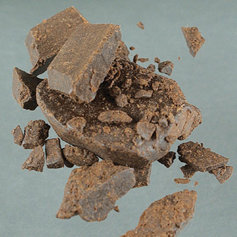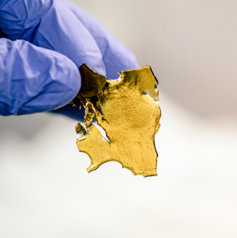Marijuana Addiction Information

Marijuana is one of the most commonly used drugs in the U.S. Marijuana refers to the dried flowers of the Cannabis Sativa plant. Once harvested and dried, marijuana is consumed by rolling the dried flowers into a cigarette and smoking it. Other methods of consumption include smoking marijuana from pipes or bongs, brewing marijuana in tea, or mixing the plant into foods (primarily baked goods such as brownies, cookies and muffins). While uncommon the leaves of the plant may also be used.
More recently, vaporizers have been employed to smoke marijuana, making it easier for marijuana users to conceal their use. Except for a change in odor (which can be covered up with perfume or cologne), it is challenging to tell the difference between a vaporizer used for marijuana consumption and a vaporizer used for nicotine consumption.
The main ingredient in marijuana that gives it its psychoactive properties is called Tetrahydrocannabinol or THC. When cannabis is consumed, THC interacts with the brain, causing the intoxicating effects that many marijuana users seek.
But THC isn’t the only chemical in marijuana that can cause mind-altering effects. Marijuana plants also have about 500 other chemicals in them, including 100 compounds, called cannabinoids, that are chemically related to THC. Depending on how a batch of marijuana is processed and consumed, the plant’s cannabinoids may also play a role in the psychoactive nature of the drug.
One of these cannabinoids is CBD, or cannabidiol. Advocates of marijuana use cite the alleged health benefits of CBD as a reason for furthering marijuana legalization. However, not only can CBD be consumed entirely on its own and altogether separate from marijuana, but CBD can also be extracted from the hemp plant, a cousin to the marijuana plant, but a plant that has far less THC in it. CBD and marijuana do not have to go hand-in-hand.
Marijuana in Its Many Forms
Over the years, the methods of marijuana use has changed dramatically. The days when using marijuana just meant “smoking a joint” have long since passed. Today, there are many ways of consuming marijuana, and there are various forms of cannabis that are available for use.
Some examples include:

- Hash – Hash is made from the resin of the cannabis plant and contains higher concentrations of THC than the unprocessed cannabis flower (the flower being where marijuana use had been traditionally focused).
- Dabs – Dabs are highly concentrated doses of cannabis. They are often made by blasting marijuana trimmings with butane to extract concentrated THC. The end product, a thick, sticky substance, is then smoked using a special device.
- Wax – Wax is another form of highly concentrated cannabis. THC wax has about 40-80 percent more THC per dose than traditional, dried forms of cannabis. This substance produces a far more powerful psychoactive effect, which, of course, dramatically increases the risk for adverse effects.

- Shatter – Shatter is another form of marijuana extract, again far more potent than dried cannabis. Shatter is very similar to marijuana wax; the critical difference being that shatter appears as a smooth substance that looks more crystalline and glass-like.
- Edibles – Edibles are simply foods that have marijuana mixed into them. These usually appear in the form of baked goods.
The Normalization of Marijuana
There has been a significant push towards the legalization of this substance, towards normalization and acceptance of marijuana use as a part of American culture. This is undoubtedly harmful, as there are adverse effects of marijuana use, harmful consequences that one can experience as a result of using the substance.
What are the Consequences of Marijuana Use and Addiction?
There are significant risks that one takes when they use marijuana. These can manifest in many different ways.
- Harmful to the body: Marijuana is harmful to the body and detrimental to physical health. Not unlike tobacco smoke, marijuana smoke contains toxic chemical irritants that not only cause harm during use, but which may lead to cancer and lung disease after repeated use.
- Harmful to the mind: Marijuana is harmful to the mind having a range of unpleasant mental phenomena, including anxiety, fear, panic, distrust and nervousness. Users may develop dependencies on marijuana, including feelings that they must continue to use the drug as a coping mechanism for “dealing with” life.
- Harmful effects on career and financial situations: A marijuana habit can easily cost hundreds of dollars per month. And even in states where marijuana is legal, being intoxicated while on the job is never acceptable. When people lose their jobs from a marijuana habit, their career and financial situation suffer even more.
- Criminal implications of use: The recreational use of marijuana is against federal law. While many states have passed laws which seek to legalize or decriminalize its use, its classification as a Schedule II drug by the United States government can result in significant penalties and consequences for its sale and use.
Effects of Use – What Marijuana Does to the Body
Marijuana causes harm both the short and long term.

Short-term effects: As soon as a hit of marijuana is inhaled, the smoke attacks the mouth, throat, lungs, and nasal passages, causing surface damage to these organs. A heavy cough is often the result of this damage. When under the influence of marijuana, reaction time is reduced, cognitive function is impaired, and a person will be more likely to experience accidents and injuries.
Long-term effects: The long-term effects of marijuana use can be quite damaging. Some data suggests that people who smoke marijuana are more likely to have lung-related health problems than those who don’t. Some evidence suggests that THC can suppress the immune system, making marijuana users more susceptible to lung infections. Marijuana use also increases one’s risk of developing certain forms of cancer. And last but not least, marijuana use, especially during one’s youth, has the potential for causing long-term, potentially permanent adverse changes in the brain.
Signs of Marijuana Use
Some of the physical, behavioral, and environmental signs of marijuana use include:
- Being dizzy and disoriented.
- Laughing for no apparent reason.
- Having red, bloodshot eyes.
- Experiencing forgetfulness and lapses in memory.
- People who use marijuana may seem very slow in their movements and thought patterns.
- They may also seem hungry at odd hours of the day or night.
- Marijuana users will often have a distinctive smell about them, and they may try to conceal that smell with perfumes or colognes.
- One might also find paraphernalia like cigar paper, tobacco rolling paper, pipes, bongs, bowls, grinders, or vaporizers.

While marijuana has not been associated with the massive death toll of other drugs like opiates or alcohol, there is still considerable harm in using marijuana and other cannabis products. For those who have a loved one or family member who is using marijuana, steps should be taken to get them off the drug. Drug treatment can serve as a viable approach to helping someone break free from marijuana and live a sober, fulfilling life.
Sources:
- https://www.drugabuse.gov/publications/research-reports/marijuana/what-marijuana
- https://www.health.harvard.edu/blog/cannabidiol-cbd-what-we-know-and-what-we-dont-2018082414476
- https://www.drugabuse.gov/publications/research-reports/marijuana/what-are-marijuanas-effects-lung-health
- https://www.drugabuse.gov/publications/research-reports/marijuana/what-are-marijuanas-effects-lung-health
- https://www.drugabuse.gov/publications/research-reports/marijuana/what-are-marijuanas-long-term-effects-brain
